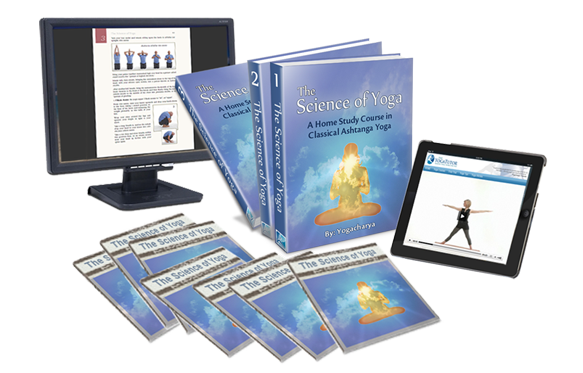[ Excerpt from The Science of Yoga, page 114 ]
The attitudes and behaviours of the early 'hippy yogis' also leant a stigma of 'flaky' to those who practiced yoga, which still remains even today, and like it or not, and underlying attitude of cynicism was perhaps another smear that became attached to the word yoga by those outside of the still relatively small Western yogic community at that time.
<< Read Yoga In The Modern World - Part 2
But it was the more generalized interest in yoga from Westerners in the ensuing years that could perhaps be seen as the greatest factor in the way that yoga has changed in recent times. That’s because an inherent difficulty presents itself when East meets West, so to speak—that being distinctly different world views.
There is a fundamental conflict between the dualistic nature of Western thought, characterized in the fabric of both the monotheistic religions, as well as the split between spirit and matter that formed the original basis of Western scientific thought; and the non-dualistic, universal view of reality of the East.
The yogic teachings and their corresponding 'Eastern facts' with which the average Westerner needed to be familiar with revealed a problem. Much of what yoga professes lies outside of the typical Westerner's framework of reality, and thus presents an enormous obstacle for all but the most enthusiastic of spiritual aspirants.
Though modern physics is now directing Western thought toward a much more decidedly Eastern view of reality, for the average person in Western society, a significant conceptual language barrier still exists. In short, we still seem to see things quite differently.
It's not that the concepts within the yoga shastra (body of yogic teachings) are beyond the ability of the Western mind to comprehend, per sé. It’s moreover that a systematic and comprehensive structure of education is needed in order to effectively transmit accurate understanding.
This takes time, and above all else, an deep understanding by the teacher of both the Western and Eastern mind and their thought processes -- a fact that was perhaps not immediately anticipated by the first significant wave of yoga gurus to head westward.
Most were perhaps ill-equipped in their understanding of the Western mind to make the necessary translations. I.K. Taimni Points out in The Science of yoga, that:
"Some teachers of yoga have attempted to meet this difficulty by taking out of the philosophy and technique of yoga, those particular practices which are easy to understand and practice, placing these before the general public as yogic teaching.
Many of these practices are of a purely physical nature, and when divorced from the higher and essential teachings of yoga, reduce their systems to a science of physical culture on a par with other systems of a similar [physical fitness] nature.
This over-simplification of the yoga life, though it has done some good and helped some people to live a saner and healthier physical life, has greatly vulgarized the movement for yogic culture and produced a wrong impression, especially in the West, about the real purpose and technique of yoga."
Yoga In The Modern World - Part 4 >>
---------------------
NOTE: This yoga article is an excerpt from The Science of Yoga, an online yoga training program with streaming yoga videos and 600 pages of step-by-step yoga instruction.

"The Science of Yoga is a course worthy of
leather binding and an honored place in the
finest libraries in the world
... It is indeed a masterful work."
Dr. John Michael Christian
AwakeningWithYoga.com
Learn More About
The Science of Yoga Course
|






